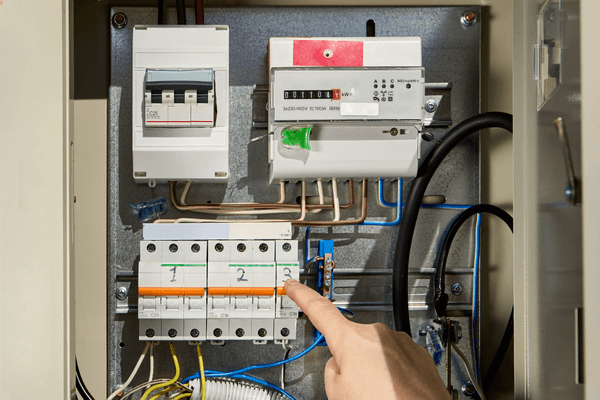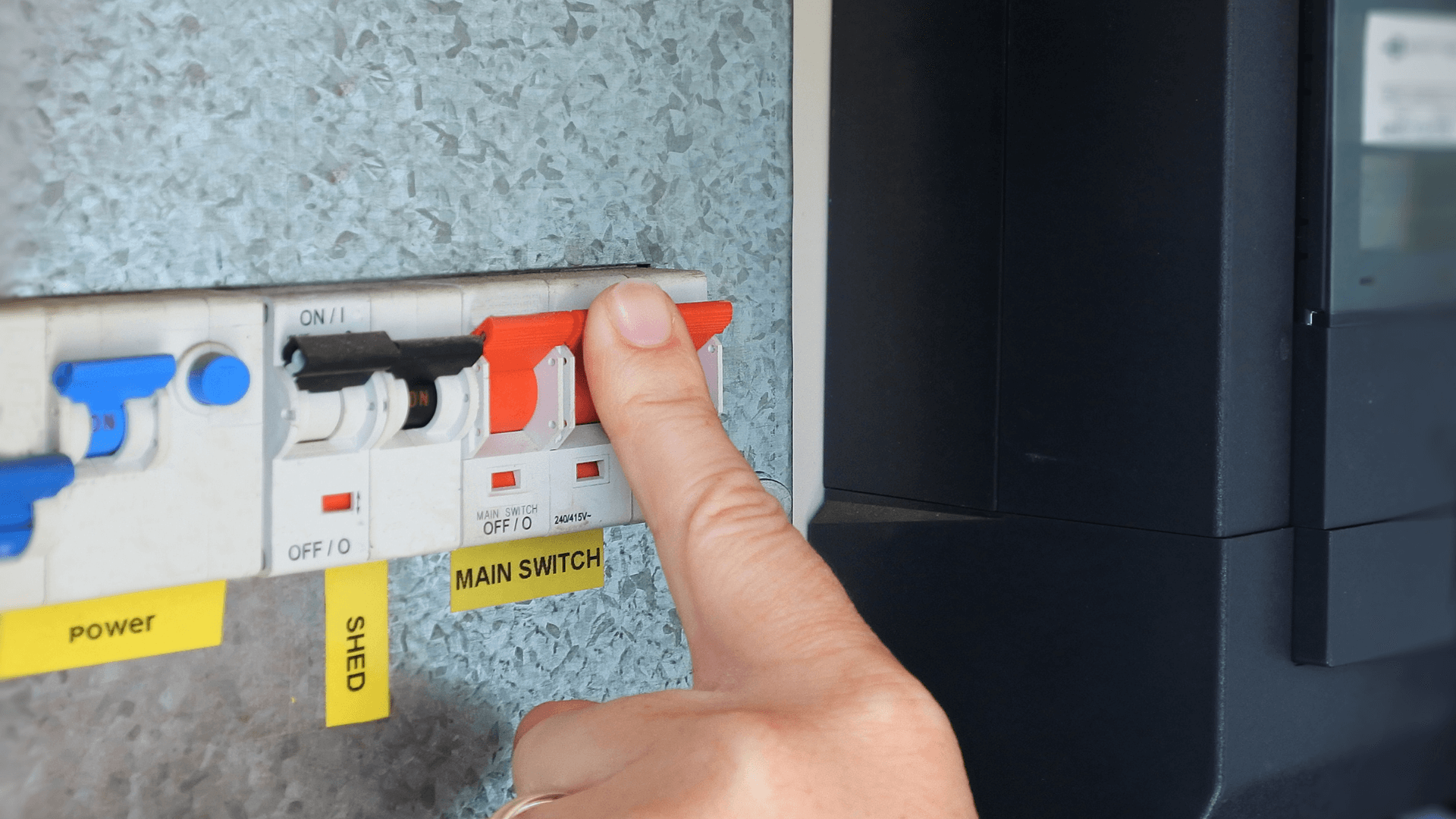The Australian electricity network extends roughly 920,000 km and could circle the equator over 20 times.
Your switchboard
Also known as a 'meter box' or 'electricity box', all homes in Australia using electricity will have a switchboard. Taking time to understand them better can come in handy when you need it most.
Switchboards can be installed indoors or outdoors, and although each may look different, the main components of a switchboard are usually made up of one or more of the following: a meter, circuit breaker, main switch, and safety switch.
Inside your switchboard
- MeterInside your switchboard you'll find a meter, which is used to measures your energy use.
- Circuit breakersAfter the electricity enters your switchboard, it's split by circuit breakers and sent through household wiring, at appropriate voltage levels, to power devices such as lights, appliances, doorbells, and sensors. Circuit breakers protect your electrical wiring from being overloaded by reducing the electricity to appropriate levels.
- Main switchThe main switch (or switches) enable you to turn power on and off for different circuits. Some older switchboards may have older style rewireable fuses. These older style fuses do not protect you from electric shock so it's important to keep this in mind for your own safety.
- Safety switchesSafety switches continuously monitor the flow of electricity. In the event of a short-circuit, an overload, or equipment failure, a safety switch will instantly (within milliseconds) shut off power to the system or appliance in trouble. All homes in Australia should have safety switches installed. Safety switches can be combined with circuit breakers in the one device. Safety switches have a 'Test' or 'T' button on them. If there are no switches with 'Test' or 'T' buttons in your switchboard, there are no safety switches on the property. If this is the case, ask your licenced electrician install these.
Surge protectors
Ask your licenced electrician about installing surges protectors. They stop sudden peaks of electricity by either blocking or reducing the voltage to a safe threshold. Some equipment and appliances will have surge protection measures built in as part of their design.

your switchboard
WorkSafe Queensland has published a handy video on YouTube called ‘Get to know your switchboard’. Check it out to get more familiar with yours.
In an emergency call 000
your electricity distributor
Check your electricity distributor's website or social media for updates on power outages.
Electricity distributors in Australia have resources including outage maps that can be accessed online. Many also give live updates via social media.
Contact your electricity distributor to report fallen wires or damaged poles and powerlines.
If you notice an electrical hazard, report it to your electricity distributor immediately, either online or by phone.
